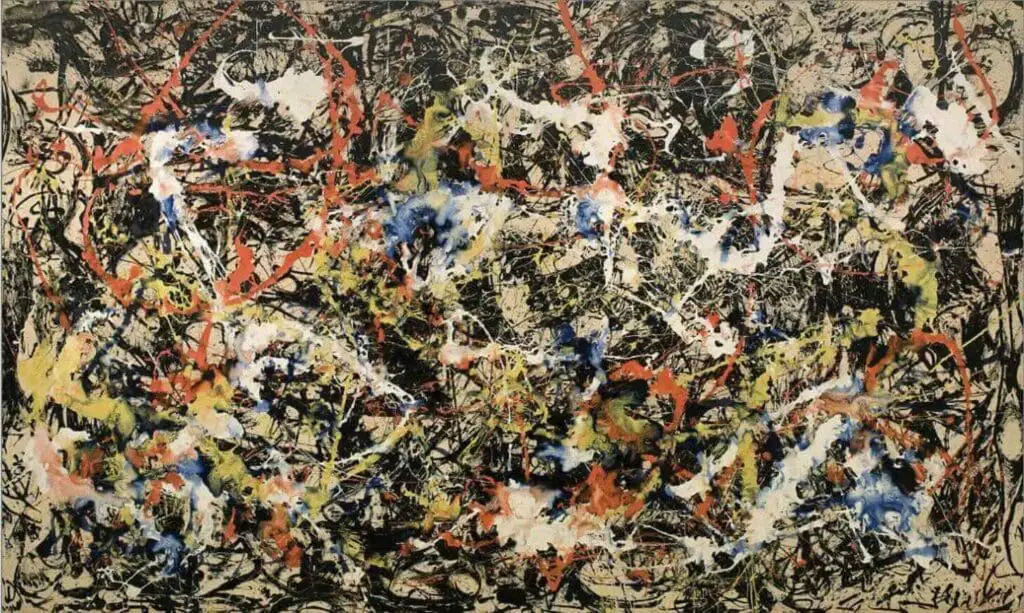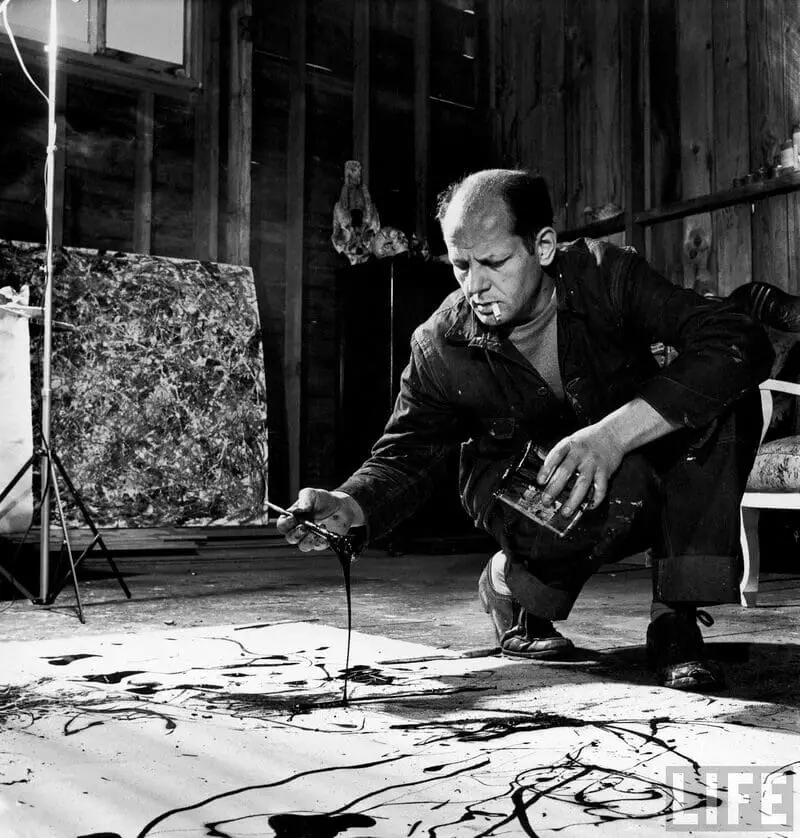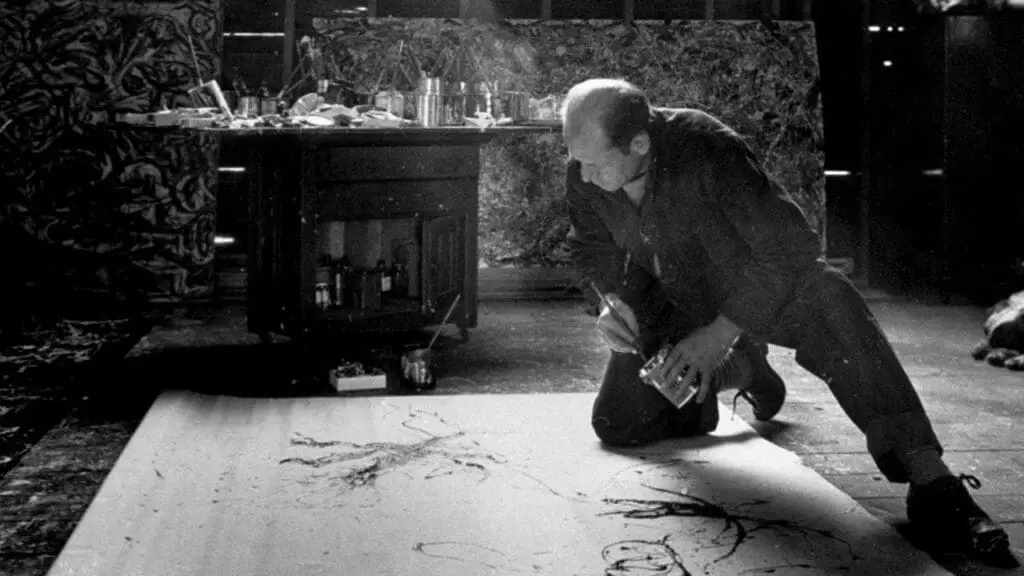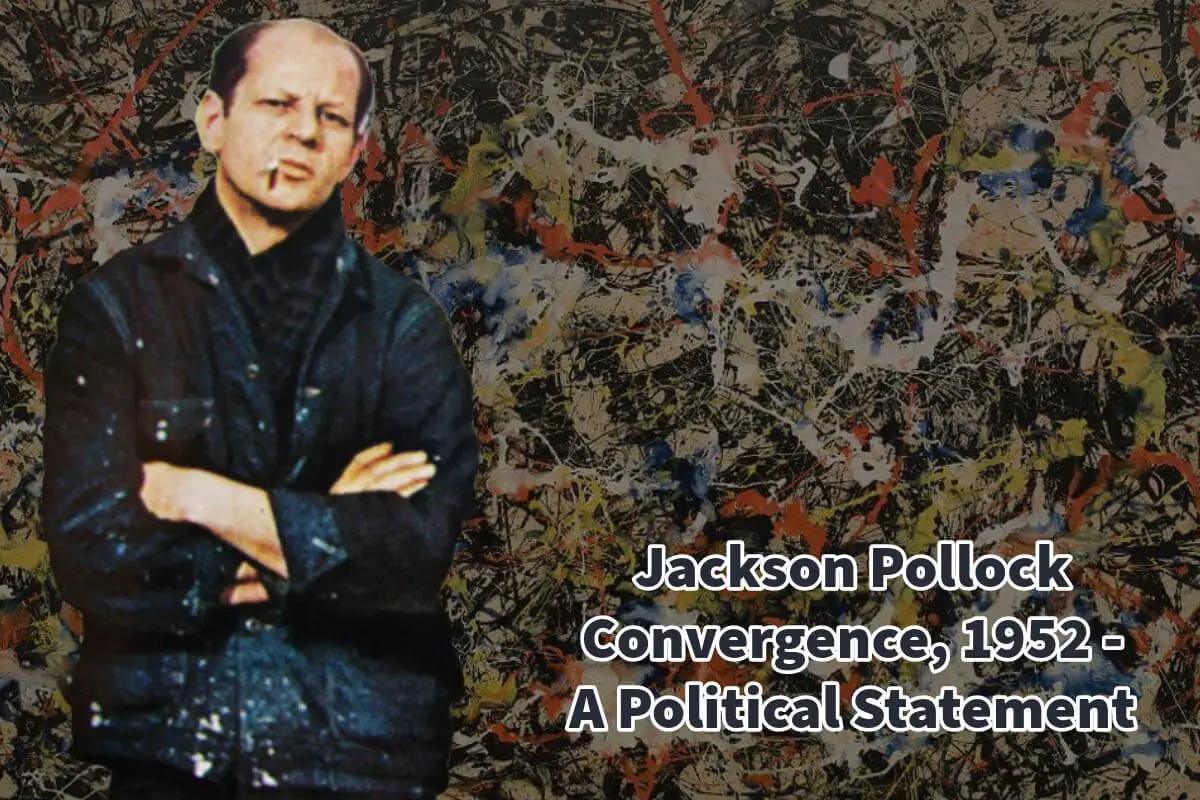One of my favorite artists is Jackson Pollock, renowned for creating many distinctive artworks. A particularly captivating piece by him is “Convergence,” painted in 1952.
What sets this masterpiece apart is its dual nature; it serves as a visual spectacle and a political statement. This work encapsulates Pollock’s own beliefs, using art as a medium to express his viewpoints. Additionally, the sheer scale of the painting contributes to its impact, making a statement through its size alone. Join me as we delve further into the fascinating intricacies of this remarkable artwork.
Table of Contents
- Jackson Pollock’s Convergence (1952): An Emblem Of Freedom, Complexity, And Innovation
- Convergence: A Collision Of Sensibilities
- Cultural Impact And Legacy Of Convergence
- Related Questions
Jackson Pollock’s Convergence (1952): An Emblem Of Freedom, Complexity, And Innovation
In the vast repertoire of modern art, Jackson Pollock’s Convergence, created in 1952, stands as a towering testament to creative freedom, emotional intensity, and unconventional innovation. Measuring 93.5 by 155 inches, this monumental work is a whirlpool of color, form, and energy that challenges viewers to question their traditional understanding of art and aesthetics.

And yet, the painting is not just a visual spectacle; it is a political statement, an emotional outpouring, and a snapshot of its time.
Who Was Jackson Pollock?
Before delving into the complexity of Convergence, it’s crucial to understand the man behind the canvas—Jackson Pollock. Born in 1912 in Cody, Wyoming, Pollock was an influential American painter who played a vital role in the development of the abstract expressionist movement.

He gained notoriety for his unique “drip” technique, which involved splattering paint onto canvas laid on the ground, allowing him to work from all angles. Pollock wasn’t just painting; he was performing. Each splatter and swirl was a dance move, a stroke of intuition, a burst of emotion.
Pollock’s importance in art history is multi-faceted. He shattered the traditional boundaries of painting in terms of technique and content.
His work paved the way for new artistic genres and gave birth to generations of artists inspired by his fearless originality. Yet, his impact went beyond art; it intersected with politics, culture, and psychology, marking him as a revolutionary of his time.
Convergence: A Collision Of Sensibilities
Convergence is a sensory assault—an exhilarating mix of colors, lines, textures, lights, and contrasting shapes, each competing for attention yet cohering into a mesmerizing, labyrinthine pattern.
But what makes it so extraordinary? Why does this chaotic tapestry command our gaze, forcing us to confront its complexities?
First, it’s worth noting the sheer scale of the work. While many art pieces require proximity for their details to be fully appreciated, Convergence practically swallows you whole from a distance.
Its massive size engulfs your field of vision, compelling a more emotional, visceral reaction before the mind begins to dissect its components.
A Political Undertone – Convergence
Interestingly, Convergence was born against the backdrop of the Cold War—a period rife with political tension and ideological struggle. A fear of Communism gripped the United States as the conflict with Russia escalated.
The painting became a bold declaration of freedom of expression and individuality in this socio-political climate. It defied the rigidity and conformism associated with Communist art, which often glorified the state through social realism.
In contrast, Pollock’s work was fiercely personal and ideologically ambiguous—a tapestry of abstract thought and feeling.
The painting even received an indirect endorsement from the CIA via the Congress for Cultural Freedom, which sought to promote American ideals of freedom and creativity as an ideological weapon against the constraining dogmas of Communism.
Pollock’s art—mystifying yet liberating—fit neatly into this narrative. It was an aesthetic and political counterpoint to the stultifying conformity the American government associated with its Cold War rivals.
The Evolution Of Convergence
What’s even more fascinating about this artwork is its evolutionary journey. Initially, Pollock began Convergence as a black-and-white composition, perhaps reflecting his persistent struggle with depression and alcoholism.
Unhappy with the result, he introduced a vivid array of colors—reds, blues, yellows—ultimately transforming the painting’s mood and impact. It became a dialogue between despair, hope, monochromatic minimalism, and polychromatic exuberance.
In 1952, critics were divided about the merits of Convergence, caught in a debate that pitted traditionalism against modernism. But as time passed, consensus grew around its status as a masterwork.
Not only did it embody Pollock’s genius and innovation, it also captured the spirit of an era, encapsulating the conflict, aspirations, and cultural shifts of the 1950s.
Cultural Impact And Legacy Of Convergence
The influence of Convergence extended beyond the art world and into popular culture when Springbok Editions released a 340-piece jigsaw puzzle inspired by the painting in 1964. Promoted as “the world’s most difficult puzzle,” this product became a sensation, with hundreds of thousands of Americans embracing the challenge.
The commercialization of the artwork speaks volumes about its accessibility and widespread appeal —it wasn’t just for the elite or the art connoisseurs; it was for everyone.

Jackson Pollock’s Convergence is far more than splatters of paint on a canvas. It’s a complex emblem of the human condition, a symbol of creative liberty, and a product of its historical moment. Its visual dynamism and political resonance defy easy categorization, inviting us to confront its intricacies and our own.
In its splashes of color and tangled lines, we see the mirror of a complex, multi-faceted America. This image continues to captivate and challenge us over seven decades after its creation.
Anita Louise Art is dedicated to art education, great artists, and inspiring others to find and create their art. We love art that uplifts and inspires. #ArtToMakeYouSmile! #ArtToMakeYouHappy!
If you want to see any of my art, you can find out more by clicking here. If you are interested in what inspires me and my paintings, you can discover more by clicking here.
We have a free newsletter and would love you to be part of our community; you can subscribe to the newsletter by clicking here. If you have any questions, I would be happy to talk to you. You can reach me, Anita, by clicking here.
Subscribe to our Anita Louise Art YouTube Channel with great videos and information by clicking here.
Join us for our podcast “5 Minutes With Art.” Spend just 5 minutes a week with us to discover and learn about great art and artists. You can find out more about our podcast by clicking here.
Related Questions
What Makes Jackson Pollock’s Art So Valuable?
Jackson Pollock was a brilliant and creative artist who was not afraid to try new techniques with art. He is known for foundering Abstract Expressionism and the gestural technique, also known as action painting. He never saw much success in his lifetime, but today his painting fetch millions of dollars and are considered extremely valuable.
By clicking here, you can discover more by reading What Makes Jackson Pollock’s Art So Valuable?
Did They Use An Original Jackson Pollock Painting In Ex Machina Or A Replica?
They would have used a copy of this painting No 5 (1948) as the painting was sold by David Geffen, a Hollywood producer and film studio executive, for over USD 140 million in 2006. Geffen would have sold the painting long before the movie was produced, and no respectable art collector would place such a valuable work of art on a film set or studio.
By clicking here, you can learn more by reading Did They Use An Original Jackson Pollock Painting In Ex Machina Or A Replica?
How Much Is The Jackson Pollock Painting Worth In The Movie “The Accountant”?
We do not know precisely how much the Jackson Pollock Free Form painting is worth, but we know that it is owned by the Museum of Modern Art in New York City, and the painting in the movie The Accountant is a reproduction or copy. Similar Jackson Pollock paintings have sold for over $100 million. So we know that Jackson Pollock’s paintings are precious in today’s art market.
By clicking here, you can learn more by reading How Much Is The Jackson Pollock Painting Worth In The Movie “The Accountant”?

